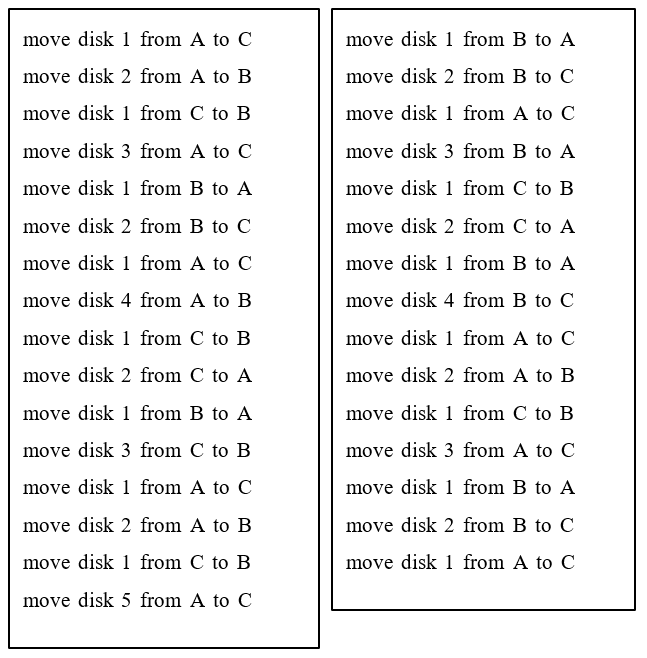11.12 Recursion: Tower of Hanoi problem
We can invoke a function recursively to solve the Tower of Hanoi problem.
The Tower of Hanoi problem is a typical recursion scenario. The problem aims to move the entire stack of disks on rod A to rod C with the original order retained, where moves are allowed only if one disk is moved at a time and if they place smaller disks on top of larger disks.

Disks are named 1- n from small to big. During the whole process we will always treat the n disks as two groups – the nth disk and the n-1 disks. We move n-1 disks to rod B and the nth disk to rod C, and then put n-1 disks to rod C.
SPL provides func(c,…) function to perform a recursive operation.
SPL script:
| A | B | C | |
|---|---|---|---|
| 1 | func | ||
| 2 | if(A1==1) | >output("move disk" + string(A1) + "from" + B1 + "to" + D1) | |
| 3 | else | >func(A1,A1-1,B1,D1,C1) | |
| 4 | >output("move disk" + string(A1) + "from" + B1 + "to" + D1) | ||
| 5 | >func(A1,A1-1,C1,B1,D1) | ||
| 6 | >func(A1,5,“A”,“B”,“C”) | ||
A1 Define a function.
B2-C2 Move the disk to rod C when there is only one disk.
C3 Move the n-1 disks on rod A to rod B.
C4 Move the bottom disk on rod A to rod C.
C5 Move the n-1 disks on rod B to rod A.
A6 Four function parameters – number of disks (name), original tower, intermediate tower and target tower.
When there are 5 disks on rod A, the output result is as follows:

SPL Official Website 👉 https://www.scudata.com
SPL Feedback and Help 👉 https://www.reddit.com/r/esProc_SPL
SPL Learning Material 👉 https://c.scudata.com
SPL Source Code and Package 👉 https://github.com/SPLWare/esProc
Discord 👉 https://discord.gg/cFTcUNs7
Youtube 👉 https://www.youtube.com/@esProc_SPL


